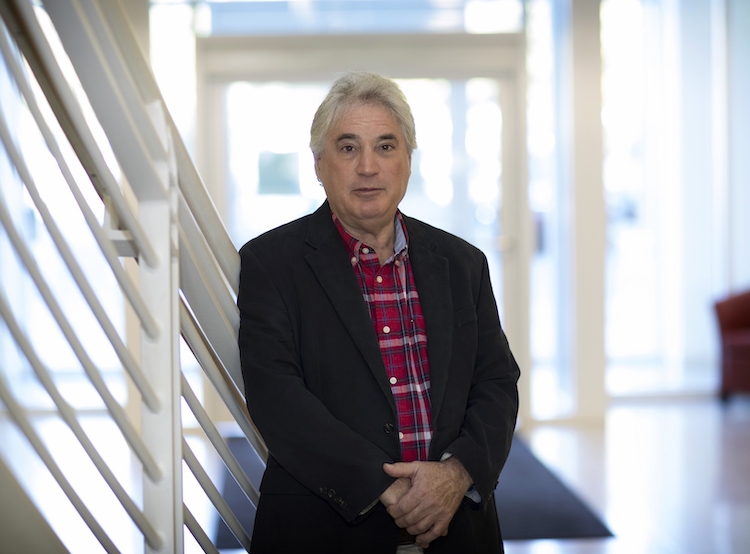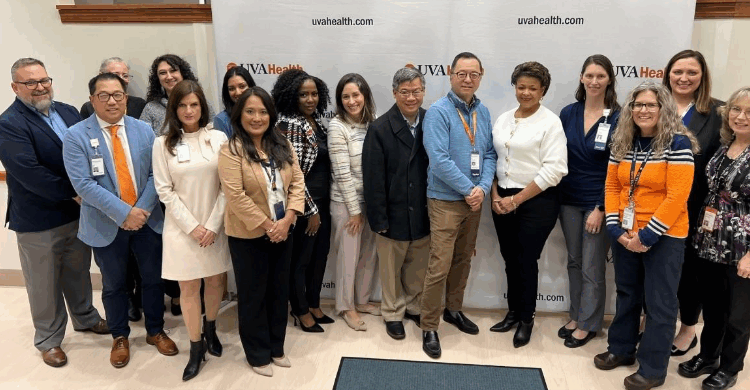
UVA's Edward H. Egelman, PhD, was elected to the prestigious National Academy of Sciences in recognition of his research accomplishments.
Scientists at the School of Medicine and their collaborators have used DNA to overcome a nearly insurmountable obstacle to engineer materials that would revolutionize electronics.
One possible outcome of such engineered materials could be superconductors, which have zero electrical resistance, allowing electrons to flow unimpeded. That means that they don’t lose energy and don’t create heat, unlike current means of electrical transmission. Development of a superconductor that could be used widely at room temperature – instead of at extremely high or low temperatures, as is now possible – could lead to hyper-fast computers, shrink the size of electronic devices, allow high-speed trains to float on magnets and slash energy use, among other benefits.
One such superconductor was first proposed more than 50 years ago by Stanford physicist William A. Little. Scientists have spent decades trying to make it work, but even after validating the feasibility of his idea, they were left with a challenge that appeared impossible to overcome. Until now.
Edward H. Egelman, PhD, of UVA’s Department of Biochemistry and Molecular Genetics, has been a leader in the field of cryo-electron microscopy (cryo-EM), and he and Leticia Beltran, a graduate student in his lab, used cryo-EM imaging for this seemingly impossible project. “It demonstrates,” he said, “that the cryo-EM technique has great potential in materials research.”
Engineering at the Atomic Level
One possible way to realize Little’s idea for a superconductor is to modify lattices of carbon nanotubes, hollow cylinders of carbon so tiny they must be measured in nanometers – billionths of a meter. But there was a huge challenge: controlling chemical reactions along the nanotubes so that the lattice could be assembled as precisely as needed and function as intended.
Egelman and his collaborators found an answer in the very building blocks of life. They took DNA, the genetic material that tells living cells how to operate, and used it to guide a chemical reaction that would overcome the great barrier to Little’s superconductor. In short, they used chemistry to perform astonishingly precise structural engineering – construction at the level of individual molecules. The result was a lattice of carbon nanotubes assembled as needed for Little’s room-temperature superconductor.
“This work demonstrates that ordered carbon nanotube modification can be achieved by taking advantage of DNA-sequence control over the spacing between adjacent reaction sites,” Egelman said.
The lattice they built has not been tested for superconductivity, for now, but it offers proof of principle and has great potential for the future, the researchers say. “While cryo-EM has emerged as the main technique in biology for determining the atomic structures of protein assemblies, it has had much less impact thus far in materials science,” said Egelman, whose prior work led to his induction in the National Academy of Sciences, one of the highest honors a scientist can receive.
Egelman and his colleagues say their DNA-guided approach to lattice construction could have a wide variety of useful research applications, especially in physics. But it also validates the possibility of building Little’s room-temperature superconductor. The scientists’ work, combined with other breakthroughs in superconductors in recent years, could ultimately transform technology as we know it and lead to a much more “Star Trek” future.
“While we often think of biology using tools and techniques from physics, our work shows that the approaches being developed in biology can actually be applied to problems in physics and engineering,” Egelman said. “This is what is so exciting about science: not being able to predict where our work will lead.”
Findings Published
The researchers have published their findings in the journal Science. The team consisted of Zhiwei Lin, Leticia Beltran, Zeus A. De los Santos, Yinong Li, Tehseen Adel, Jeffrey A Fagan, Angela Hight Walker, Egelman and Ming Zheng.
The work was supported by the Department of Commerce’s National Institute of Standards and Technology and by National Institutes of Health grant GM122510, as well as by an NRC postdoctoral fellowship.
To keep up with the latest medical research news from UVA, subscribe to the Making of Medicine blog at http://makingofmedicine.virginia.edu.



